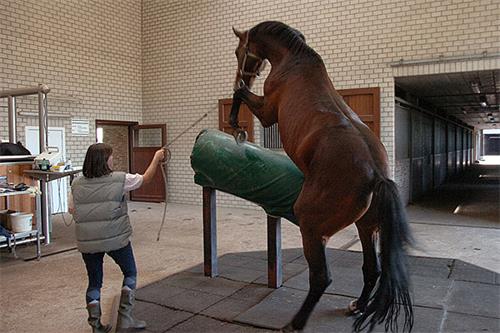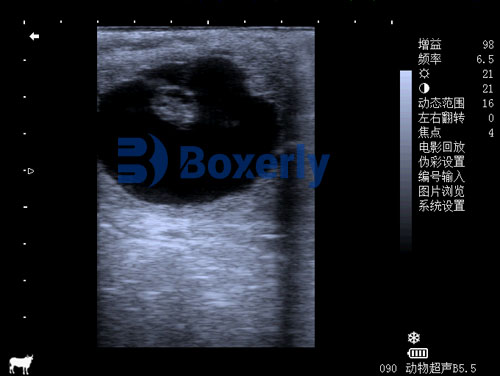As a livestock breeder with years of experience working with mares, I’ve often faced the question many horse owners and equine veterinarians encounter: Should we inseminate using fresh or frozen semen? The choice is far from trivial—it can directly impact conception rates, breeding schedules, foal quality, and long-term herd genetics. In this article, I’ll share insights based on both practical farm experience and current veterinary reproductive science. We’ll compare fresh and frozen semen across several important dimensions to help breeders make an informed decision.

Introduction to Artificial Insemination (AI) in Mares
Artificial insemination (AI) is a commonly used reproductive technique in equine breeding, especially for sport horses and valuable breeding mares. AI offers multiple advantages over natural breeding, including improved genetic selection, reduced risk of injury, and the ability to breed over long distances. Two main types of semen are used in AI: fresh and frozen. Each has its pros and cons, and understanding these differences is essential for any horse breeder.
What Is Fresh Semen?
Fresh semen, also called raw semen, is collected from a stallion and typically inseminated into the mare within a few hours. It’s either inseminated immediately or extended with a nutrient medium and shipped cooled (not frozen) to preserve viability for 24–48 hours.
Advantages of Fresh Semen:
Higher Conception Rates: Fresh semen has higher motility and viability, often leading to better pregnancy rates, especially when inseminated at the optimal time during ovulation.
Minimal Handling Damage: It avoids the freeze-thaw process, which can damage sperm cell membranes.
Ease of Evaluation: The semen can be analyzed for motility, morphology, and concentration before insemination.
Disadvantages of Fresh Semen:
Limited Transport Window: Fresh semen must be used quickly—usually within 24 to 48 hours—which limits geographical distance.
Scheduling Challenges: Timing insemination with ovulation becomes critical, requiring accurate reproductive monitoring and potentially more veterinary costs.
What Is Frozen Semen?
Frozen semen is collected from a stallion, processed with cryoprotectants, and stored in liquid nitrogen (-196°C). It can be preserved indefinitely and transported globally.
Advantages of Frozen Semen:
Global Stallion Access: Breeders can inseminate mares with semen from elite stallions anywhere in the world.
Flexible Timing: Frozen semen can be stored on-site and used when the mare is ready, eliminating the need to synchronize with stallion collection.
Genetic Conservation: Stallions that are retired or deceased can still pass on their genetics.
Disadvantages of Frozen Semen:
Lower Conception Rates: The freezing and thawing process damages some sperm cells, reducing viability and motility.
Technical Demands: Insemination must be timed precisely within a narrow post-ovulation window. Many farms rely on ultrasound scanning every 6–8 hours to pinpoint ovulation.
Higher Costs: The need for more intensive veterinary involvement and specialized insemination techniques increases cost.

Reproductive Timing and the Role of Ultrasound
Regardless of semen type, accurate ovulation timing is crucial for successful AI. In our farm, we use transrectal ultrasonography to monitor follicular development and uterine tone. Fresh semen can be inseminated once per cycle, often within 24 hours before ovulation. In contrast, frozen semen typically requires two inseminations shortly before and after ovulation, or a single insemination at the detected moment of ovulation.
Veterinary ultrasound allows us to track:
Follicle size and shape
Uterine edema
Corpus luteum formation
Ovulatory timing
This precision is especially important when using frozen semen due to its limited post-thaw lifespan.
Conception Rate Comparisons
Studies and field data consistently show:
Fresh semen AI conception rates: 60–70% per cycle
Cooled semen (used within 24–48 hours): 50–65% per cycle
Frozen semen AI conception rates: 30–55% per cycle, depending on mare fertility and timing accuracy
On our farm, we’ve found the most success using frozen semen in younger, fertile mares under 12 years old with no history of reproductive issues. For older mares or those with uterine pathology, fresh semen yields significantly better outcomes.

Logistics, Cost, and Management
Fresh Semen Use Requires:
Coordination with the stallion owner for collection and shipping
Overnight delivery systems
Quick insemination upon arrival
Frozen Semen Use Requires:
Cryotank storage and maintenance
Reproductive ultrasounds every 6–8 hours during estrus
Trained technicians to handle thawing and intrauterine deposition
Cost Considerations:
Fresh semen may cost less per cycle, but limited shipping availability can cause delays and missed cycles.
Frozen semen might be more expensive per cycle, but it allows flexibility in scheduling and access to a broader stallion pool.
Mare Fertility and Suitability
Not all mares are ideal candidates for frozen semen AI. Mares with:
A history of poor uterine clearance
Endometrial cysts or inflammation
Age-related reproductive decline
…tend to have lower pregnancy rates with frozen semen. For these mares, we prefer fresh semen and sometimes pair it with uterine lavage and oxytocin therapy post-insemination to improve fertility outcomes.
Stallion Fertility and Semen Quality
Stallions also vary in how well their semen freezes. Some stallions’ semen handles cryopreservation well and retains high post-thaw motility, while others experience a sharp decline. Always request post-thaw motility reports when purchasing frozen semen to avoid wasting time and money.
On our farm, we’ve learned the hard way to avoid frozen semen from stallions with poor freezing profiles. Evaluating pre-purchase lab reports from reputable sources is essential.

Choosing the Right Option
When deciding between fresh and frozen semen, consider:
Mare’s age and reproductive health
Stallion location and semen availability
Your farm’s technical capability (ultrasound, storage, AI technicians)
Budget and willingness to monitor ovulation closely
Here’s a quick summary table:
| Factor | Fresh Semen | Frozen Semen |
|---|---|---|
| Conception Rates | Higher | Lower |
| Scheduling Flexibility | Limited | High |
| Stallion Access | Local/National | Global |
| Veterinary Demands | Moderate | High |
| Suitable for Older Mares | Yes | Cautiously |
| Long-Term Storage | No | Yes |
Final Thoughts
As a breeder, I’ve used both fresh and frozen semen extensively. Each has its place in a thoughtful breeding strategy. If you're breeding a high-value mare and want the best possible conception odds, fresh semen might be the safer bet—especially if the stallion is accessible. But if you're aiming for elite genetics from an international stallion or want flexibility in timing, frozen semen is a powerful tool.
In the end, your breeding goals, resources, and the unique characteristics of your mares will guide the best decision.
References
Squires, E. L., & McCue, P. M. (2021). Equine Reproduction. Wiley-Blackwell.
Samper, J. C. (2009). Equine breeding management and artificial insemination. Elsevier Health Sciences.
USDA National Animal Health Monitoring System (NAHMS) Equine Studies.
link: https://www.bxlimage.com/nw/1204.html
tags:






